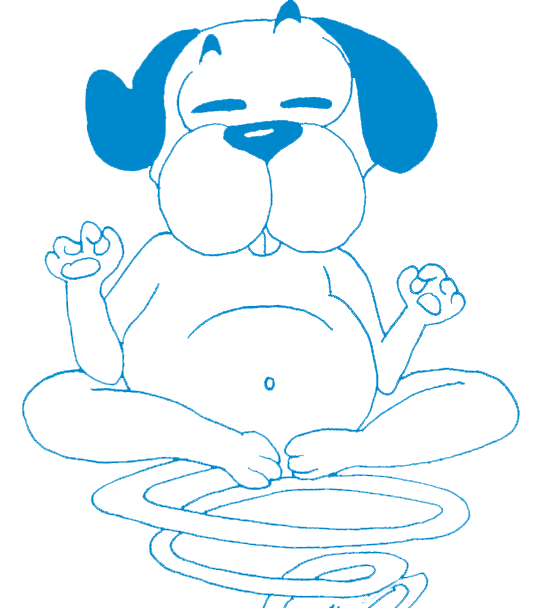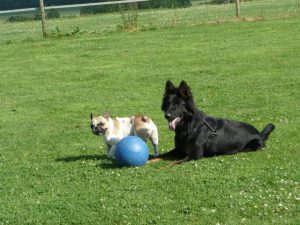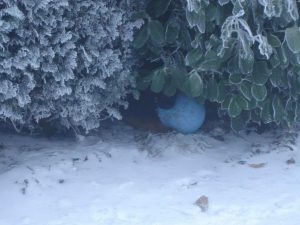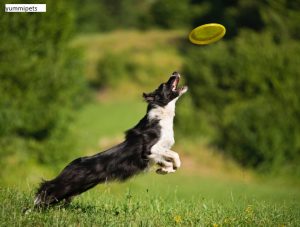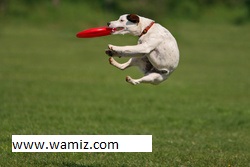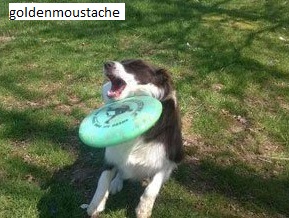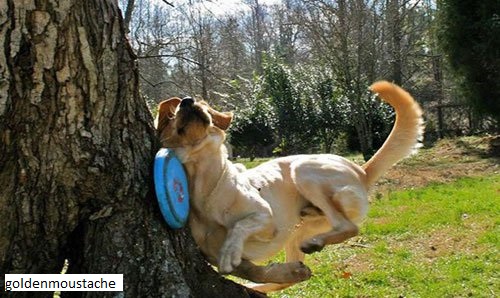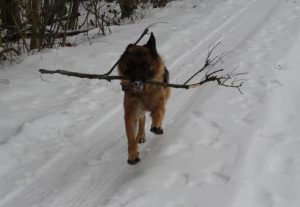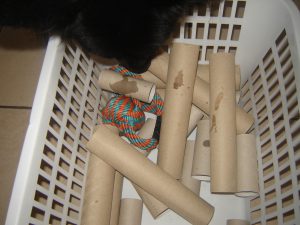What is it?
It involves throwing an object (ball, stick, rope, frisbee,…) a few metres away, with the aim that the dog goes to fetch it and bring it back to us. We must admit that everyone has already tried this kind of game. Let’s observe our dogs, what can we notice?
The process
During a game of fetch, the set of actions or physical reactions of our companion is made up of, among other things :
- Seeing the object being thrown,
- Start in the direction of the launched object,
- Look / hear / feel where the object has landed,
- Arriving at the destination,
- Stop to grab the object or catch it in mid-air,
- Return the object to the launcher,
- Stop and start again.
This visual, auditory and olfactory information is sent to the brain. Depending on the dog’s experience, he either remains in a rational or moderate interaction (those who cope) or it becomes an automatic reaction, it has become a reflex (those who do not cope).
Think for a moment of swimmers or runners who have learned to react as quickly as possible to the auditory stimulus of the gunshot announcing the start of the competition. They trained their bodies to fight innate reflexes (startle, shake,…) to transform them into learned reflexes (propel themselves forward).
This process is identical in dogs trained to run after objects. Through training sessions, our dogs’ reflexes are sharpened to start and run after an object. And finally, it doesn’t matter what the object is: everything that passes in front of the dog’s eyes, at a certain speed, provokes the same reflex. Our dog will run after that thing or that person: a bicycle, a cat or a child running,… We have increased our dog’s speed of reactivity as well as its predation instinct.
Those who cope
Some of our companions are quite capable of handling chasing games. After some throws, they stop fetching the object and chew it in the corner of the garden or the living room or simply give it up to move on to other activities. These dogs are able to measure their physical and emotional tolerance threshold.
Those who do not cope
What about dogs who get excited to the point of not being aware of the world around them? At the sight of the adored object, these dogs will salivate, whine, bark, jump up, sometimes all at once: a firework of excitement. They become addicted to these objects and what they represent. In some cases, these objects become such an important resource that these dogs do everything in their power not to lose this object. A person or an animal who would come too close to this treasure, could bitterly regret it.
|
|
|
Physical injuries
Depending on the “technique” chosen by our dog for starting, running or jumping (and returning to the ground), catching, pivoting back to the thrower,… serious physical injuries can be sustained. If our dog chooses to launch himself into the air to catch the object passing over him, let’s imagine the muscular, articular and skeletal constraints to which his body is subjected from the moment he propels himself from the ground: he jumps, is in suspension, grabs (or tries to grab) the object and lands or falls back to the ground.
Let us remember that our dog’s skeleton is not equipped with a collarbone. Its spinal column is therefore connected to the scapula (upper bone of the front legs) by muscles and tendons only.
|
|
|
|
|
|
An expert opinion
Nathalie Barrière, a veterinarian specialising in osteopathy, answers the question “What injuries or other consequences have you seen specifically as a result of throwing games (balls, frisbees, sticks,…) ?”
“The most common injury is a torn anterior cruciate ligament in the stifle (knee). This tear can be partial or complete. The lower leg remains on the ground while the upper one swivels, creating a twisting of the knee. When the tear is complete, the dog often needs surgery. When it is partial, it depends on many factors but the dog should be rested for at least 2 months.
This injury leads to a cascade of compensations at the osteopathic level: the pelvis tilts to put more weight on one hind leg than the other. This tilting of the pelvis causes a blockage in the 4th or 5th lumbar vertebrae and in the thoracolumbar junction.
The hips will be stimulated during propulsion. If this is done at an angle and/or cold, the dog may feel severe pain. The pelvis will then very quickly become injured as well.
Injuries to the forelimbs are also frequently encountered, especially in the shoulders (most often following a slip) or in the carpus (wrists) (following sudden braking and changes of direction).
Injuries to the back will mainly be located in the high dorsal region (between the shoulder blades), at the thoracolumbar junction and in the lower lumbar region.
The nape of the neck may also be blocked during an abrupt movement. This is one of the most painful areas. Dogs often cry out “as if they were stepped on their tail, even though they are not being touched” throughout the period of inflammation.
The temporo-mandibular joints (jaws), when catching straight “in the mouth” can also become blocked.
Injuries and pain can be marked instantly, sometimes even with a scream, or after cooling down (sometimes even only the next day).
In the most serious but fortunately rarer cases, fractures or tearing of the growth plates can occur. These fractures are difficult to treat because they are often spiral fractures, i.e. linked to a twisting of the long bone at the time of landing. The bone most often affected by this type of fracture is the tibia.
All these problems were “acute” after-effects, but we must not forget the injuries which will be chronic, as a result of repeating the same movements over and over again, we will find arthritis in the joints which are most stressed, i.e.: the knees, hips, vertebrae (dorsal and lumbar), wrists and shoulders.”
Excitement and stress hormones
Let’s remember that excitement causes the dog’s body to trigger the survival process: fat, sugar, increased heart rate, increased blood pressure, stress hormones,… His body prepares itself for action.
The ideal is to avoid exciting and/or stressful situations. Remember: in case of too much excitement or stress, the brain is monopolised by the physical survival reactions and therefore cannot handle anything else in the same amount of time. New information is not acted upon because the brain is unable to deal with it.
Alternative activities
If our dog likes balls, sticks, frisbees or any other toy, there are a multitude of games to offer them using these toys: chewing, carrying, looking for a lost object, retrieving a hidden object,…
Overcoming a challenge such as carrying an object reinforces the confidence our dog has in himself.
|
|
|

